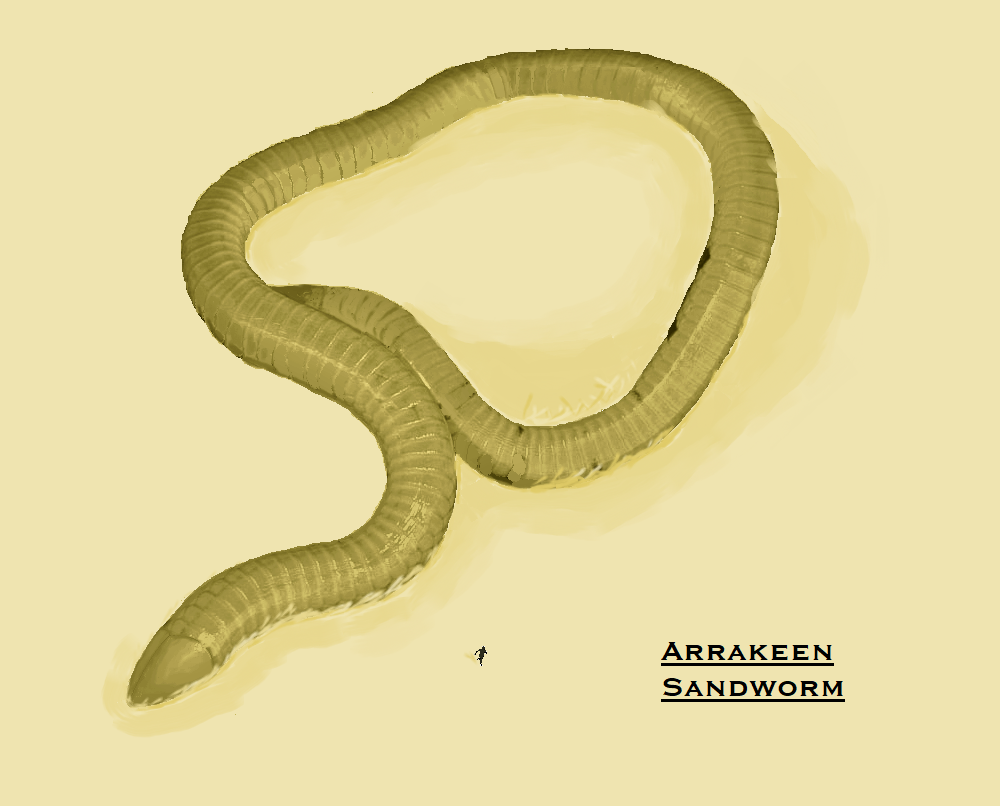HOME | DD
 CallOfTheNightOwl — My interpretation of the Arrakeen Sandworm (Dune)
CallOfTheNightOwl — My interpretation of the Arrakeen Sandworm (Dune)

#dune #alienspecies #extraterrestriallife #speculativeevolution #speculativebiology
Published: 2020-09-19 08:45:40 +0000 UTC; Views: 680; Favourites: 17; Downloads: 0
Redirect to original
Description
This interpretation takes inspiration of the shovel nosed snake, a desert animal perfectly adapted for swimming through fine sand.
The silhoeutte running away in the image is a 1.8 metre tall human being, almost as tall as the segments of the worm are long. With 130+ segments, this particular sandworm is approximately ~250 metres.
The sandworms of Arrakis can exceed 400 metres in length, and feed on sand plankton within the sands of Arrakis.
The head design is similar to the three petal design found in the 1984 film adaptation and in numerous other illustrations of the sandworm.
This interpretation is more elongated and pointed to reduce drag and allow the worm to shovel its way into the sand.
The body of the sandworm is exceedingly smooth, like the belly of a desert snake, to further reduce friction against the sand and maximise energy use.
In life, the sandworm would move across and through the sand in a serpentine motion, maximising forward motion while generating air pockets that decrease the sand's overall viscosity and further reduce drag, as seen in numerous subareneous animals like the shovel nosed snake.
All in all, this interpretation is guided by the environmental conditions presented on Arrakis and the evolutionary traits that develop in animals on Earth adapted to a similar environment.
Related content
Comments: 4

👍: 0 ⏩: 1

👍: 0 ⏩: 1

👍: 0 ⏩: 1























